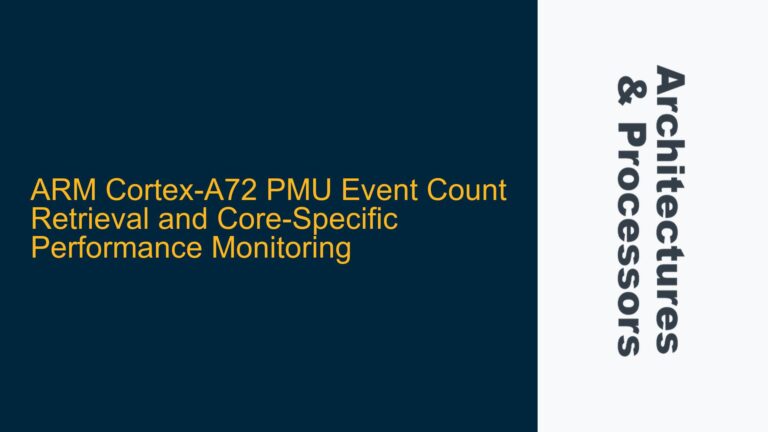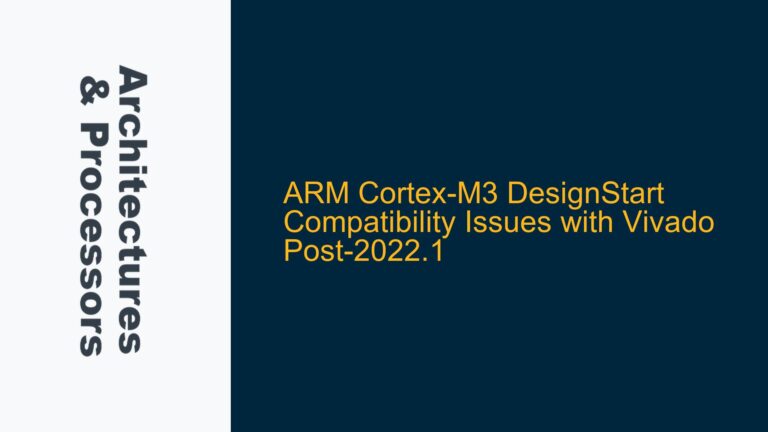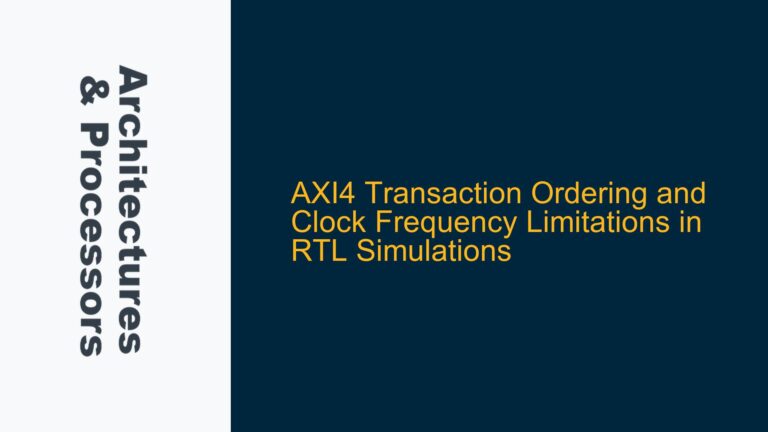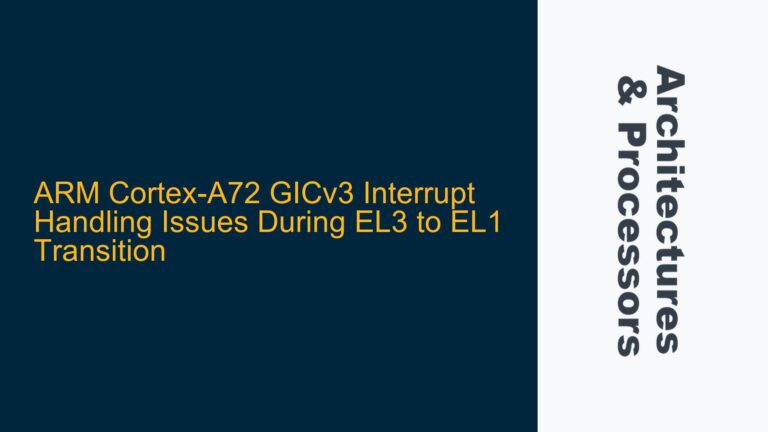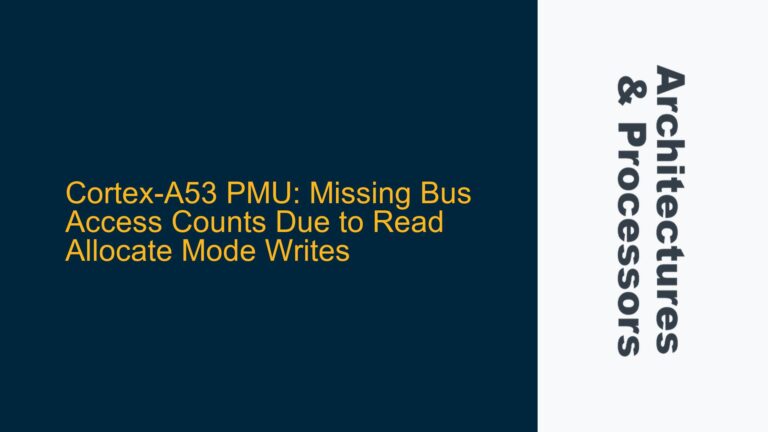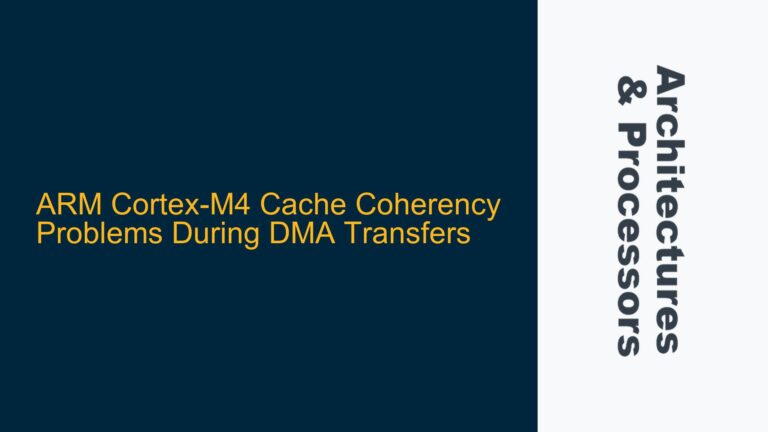Cortex-R52 Data Cache Access and Debugging Challenges
The Cortex-R52 processor, part of ARM’s real-time processor family, is designed for safety-critical and high-performance embedded systems. One of the key features of the Cortex-R52 is its data cache, which significantly improves performance by reducing memory access latency. However, accessing or reading the contents of the data cache directly is not a straightforward task. This is because the cache is a hardware-implemented feature designed to operate transparently to the software, meaning that its contents are not directly exposed to the programmer through standard memory-mapped interfaces.
The Cortex-R52 data cache operates under the ARMv8-R architecture, which introduces specific challenges when attempting to inspect cache contents. Unlike some other ARM cores, the Cortex-R52 does not provide direct instructions or registers to dump the cache contents. This limitation is particularly relevant when debugging or verifying the correctness of data in safety-critical applications, where ensuring data integrity is paramount.
The Xilinx ZCU102 evaluation board, which integrates the Cortex-R52, adds another layer of complexity. The board’s configuration and the interaction between the Cortex-R52 and the FPGA fabric can influence cache behavior. For instance, the memory hierarchy, including the L1 and L2 caches, must be carefully managed to avoid inconsistencies or unintended side effects when attempting to inspect cache contents.
Understanding the Cortex-R52 data cache architecture is essential for addressing this issue. The cache is typically organized into sets and ways, with each cache line containing a tag, valid bit, and data. The cache controller manages the allocation, eviction, and coherency of cache lines, but these operations are not directly accessible to the programmer. This lack of direct access complicates efforts to read cache contents, especially when debugging or verifying system behavior.
Cache Coherency and Memory Management Unit (MMU) Configuration
One of the primary reasons why reading Cortex-R52 data cache content is challenging is the interplay between cache coherency and the Memory Management Unit (MMU). The MMU is responsible for translating virtual addresses to physical addresses and managing memory protection. In the Cortex-R52, the MMU configuration can influence how data is cached and accessed. For example, if the MMU is configured to mark certain memory regions as non-cacheable, any attempts to read cache contents for those regions will fail because the data is not cached in the first place.
Cache coherency is another critical factor. The Cortex-R52 supports cache coherency protocols to ensure that multiple cores or agents accessing the same memory location see a consistent view of the data. However, these protocols operate at a hardware level and are not directly accessible to software. This means that even if you could read the cache contents, you would need to ensure that the data is coherent with the main memory and other caches in the system.
The Cortex-R52 also includes features like cache lockdown, which allows specific cache lines to be pinned in the cache to prevent eviction. While this feature can improve performance for critical data, it adds another layer of complexity when attempting to inspect cache contents. If a cache line is locked, it may not be evicted or updated as expected, leading to potential inconsistencies when trying to read the cache.
Additionally, the Cortex-R52’s cache architecture includes features like write-back and write-through policies, which determine how data is written to memory. In a write-back policy, data is written to the cache first and only written to memory when the cache line is evicted. In a write-through policy, data is written to both the cache and memory simultaneously. These policies can affect the visibility of data in the cache, especially when attempting to read cache contents during debugging.
Debugging Techniques and Cache Inspection Strategies
While the Cortex-R52 does not provide direct instructions to read cache contents, there are several strategies and techniques that can be employed to inspect or infer cache behavior. These techniques often involve a combination of hardware debugging tools, software-based cache management, and careful system configuration.
One approach is to use the Cortex-R52’s debug features, such as the Embedded Trace Macrocell (ETM) and the CoreSight Debug Architecture. These tools can provide insights into cache behavior by tracing memory accesses and cache operations. For example, the ETM can capture detailed information about cache hits, misses, and evictions, which can be used to infer the contents of the cache. However, this approach requires specialized hardware and software tools and may not provide a direct view of the cache contents.
Another strategy is to use software-based cache management techniques. For example, you can use cache maintenance operations to flush or invalidate specific cache lines. By carefully timing these operations and observing the resulting memory accesses, you can infer the contents of the cache. This approach requires a deep understanding of the Cortex-R52’s cache architecture and careful control over the system’s timing and configuration.
A third approach is to leverage the Cortex-R52’s memory-mapped registers and performance monitoring counters. These registers and counters can provide information about cache usage, such as the number of cache hits and misses, the amount of data transferred to and from the cache, and the cache’s overall performance. While this information does not provide a direct view of the cache contents, it can be used to infer cache behavior and identify potential issues.
Finally, it is important to consider the system’s overall configuration and the interaction between the Cortex-R52 and other components, such as the FPGA fabric on the Xilinx ZCU102 evaluation board. For example, if the FPGA is configured to access memory directly, it may bypass the Cortex-R52’s cache, leading to inconsistencies when attempting to inspect cache contents. In such cases, it may be necessary to modify the system’s configuration or use additional debugging tools to ensure that the cache behavior is consistent and predictable.
In conclusion, while reading the Cortex-R52 data cache content directly is not possible, a combination of hardware debugging tools, software-based cache management techniques, and careful system configuration can provide valuable insights into cache behavior. By understanding the Cortex-R52’s cache architecture and leveraging the available tools and techniques, you can effectively debug and verify the correctness of data in safety-critical and high-performance embedded systems.

